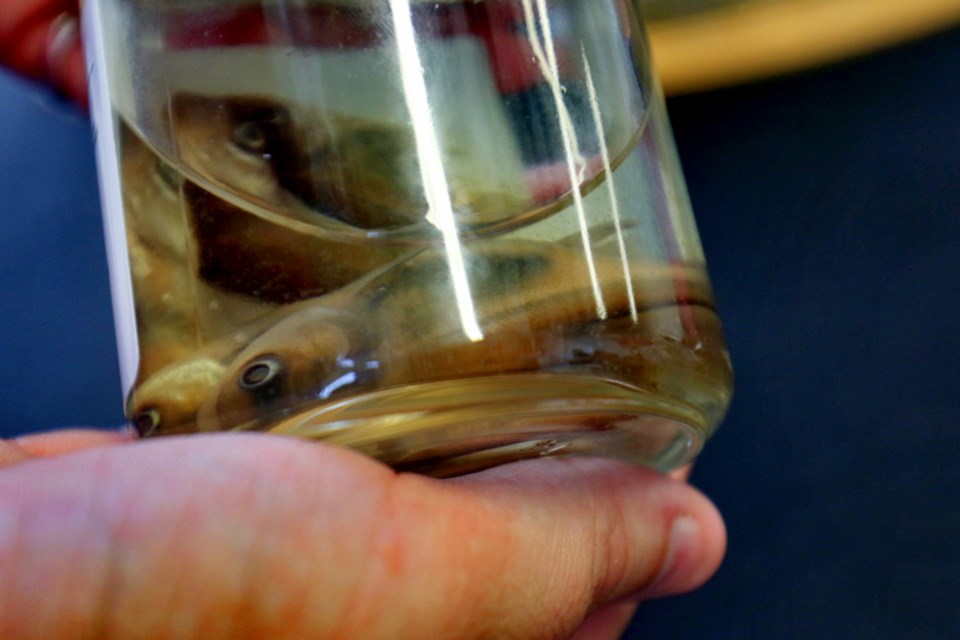The Invasive Species Centre hosted an aquatic invasive species workshop at The Machine Shop Thursday, bringing invasive species groups and organizations together for a series of talks and presentations.
“The workshop is basically to highlight invasive species issues in Ontario, and specifically in the Algoma region,” said Invasive Species Centre community education and outreach coordinator Lauren Bell.
The one-day workshop was attended by representatives of the Sea Lamprey Control Program, Invasive Species Centre, Three Shores CISMA from the eastern Upper Peninsula, and Ontario’s Invading Species Awareness Program.
The workshop primarily revolved around sea lamprey control throughout the Great Lakes, and asian carp, which aren’t currently established or reproducing in the Great Lakes, but is considered to be a threat due to the Sault’s geographical location.
Mike Steeves, who is the section head of assessment for the Sea Lamprey Control Centre, was invited by the Invasive Species Centre to speak about the control program.
He says there’s two components at work in the Sea Lamprey Control Centre: Lampricide application control, and the assessment side, which ultimately determines which bodies of water are infested, and to what extent.
“In some lakes we’re doing quite well, we’re bringing not just lamprey numbers, but the effects that they’re having on the fisheries down to the levels that we would like to see, so that other fish management agencies can do their fish management jobs and realize what we want to see in the other parts of the fishery in other lakes,” Steeves said. “For example, in Lake Erie we have a lot of sea lampreys right now. It’s just a challenge to try and tackle all of the populations around the Great Lakes.”
In April 2018, the federal government announced that it’s providing the Sea Lamprey Control Centre with $8.7 million over five years - with an annual increase of $2.5 million to the Great Lakes Fisheries Commission (GLFC) - for its sea lamprey control assessment and research.
